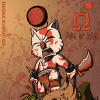3d textures?
does anyone know of a tutorial/article on useing 3d textures in opengl? links would be much appreciated  Klaus
Klaus
You probably aren''t going to find any good 3D texture tutorials because 3D textures have no really practical purpose in todays world of polygons and fragment shaders. One big downfall of them is that they take up a lot of room in memory. They''re used quite a bit in the medical industry, I''ve heard, for modelling things that need good functional accuracy, but don''t need a lot of flashy graphics (like CAT scans and stuff). In entertainment, John Carmack once said that a good use for them would be real 3D lighting, but that was years ago, before pixel and vertex shaders became the ''in thing''. The best source of information on 3D textures would probably be the Red Book. The online version might not have all the good stuff though, because it only covers OpenGL 1.1, and I think 3D textures might be a 1.2 feature, but don''t hold me to that... 
--Buzzy
(formerly buzzy_b)
--Buzzy
(formerly buzzy_b)
Of course, someday, voxels (3D textures) will replace polygons. But it will be quite some time before hardware manufacturers shift their focus, since you can use lots of fancy tricks (such as shaders) to make polygons look better.
I think in theory you could use a 3D texture and a vetex/pixel shader (dunno which one of the top of my head) to create real time dynmic 3D clouds, dunno how expensive it would be however to do, but it would be a classy effect if you could pull it off and quickly 
disclaimer: this post was done @ 6:30AM UK time, I''m not thinking straight and have limited vertex and pixel shader knowlage, therefore I could have just talked utter rubbish, would be nice if someone would conferm or deny my theory
disclaimer: this post was done @ 6:30AM UK time, I''m not thinking straight and have limited vertex and pixel shader knowlage, therefore I could have just talked utter rubbish, would be nice if someone would conferm or deny my theory
quote:Original post by Buzzy
You probably aren''t going to find any good 3D texture tutorials because 3D textures have no really practical purpose in todays world of polygons and fragment shaders.
I think a good use for them might be something like 3D fog. You could even interpolate the 3D texture through a function with a time base so that the fog rolls and changes. Also, texturing something like a tree. The texture is pretty well constant...
I guess it really depends on your definition of a 3D texture now that I think of it. I''m used to thinking of 3D texture''s like in defining a texture for a raytracer like Povray. The texture essentially becomes a function. You pass in coordinates, and it will return a color. So for something like a raytracer it would do it for every pixel and find the color.
I''m ranting now, mostly because it''s almost 1am and I''m tired. I''ll stop now
Always remember, you''''re unique. Just like everyone else.
merlin9x9: "Of course, someday, voxels (3D textures) will replace polygons. But it will be quite some time before hardware manufacturers shift their focus, since you can use lots of fancy tricks (such as shaders) to make polygons look better."
I think the same argument could be made of NURBS or other forms of curves. It''s hard to tell what the future of 3D will hold.
--Buzzy
(formerly buzzy_b)
I think the same argument could be made of NURBS or other forms of curves. It''s hard to tell what the future of 3D will hold.
--Buzzy
(formerly buzzy_b)
Well, you're right. But voxels make a lot of things simpler to work with, more elegant, and more intuitive than mathematical representations. For example, imagine how painful it would be to blow a hole in a NURBS surface. If you just cut a circle in there, it's rather trivial. But if you want it to look truly real, you'll need lots of jagged edges, and that's where things get tricky. At some point, the mathematics of realism will become so messy, a 3D matrix of pixels (voxels) will become very attractive. Collision detection and tons of other things will be easier as well.
[edited by - merlin9x9 on July 17, 2002 3:34:42 PM]
[edited by - merlin9x9 on July 17, 2002 3:34:42 PM]
This topic is closed to new replies.
Advertisement
Popular Topics
Advertisement






